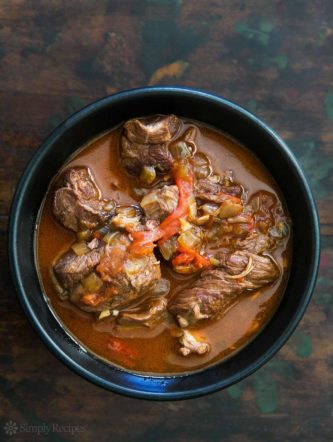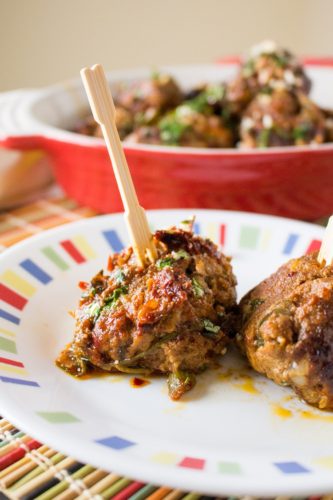Grenache plays a starring role in a slew of stunning wines from around the world. It serves as the dominant force in southern Rhone’s Chateauneuf-du-Pape, and supplies a base of power in Spain’s legendary Priorat. These wines often bring high prices, big scores, and incredible age-worthiness. So how is it that the same grape, when bottled in Spain as a single variety, costs the price of a sandwich and seems largely ignored by the general public?
“Grenache has basically been disregarded for the last century. I find myself buying more and more Grenache based wines as I get older”
Robert Parker
Garnacha has long been thought of mostly as a blending wine. But thanks to a new generation of winemakers in Spain we’re seeing some crazy good examples. They’re thinning crops to control yields, taking advantage of more complex fruit from old vines, and employing modern winemaking techniques to make much more sumptuous wines with exceptional character and concentration.
About the varietal
Just 20 years ago Grenache was one of the most widely planted grapes in the world. Today it still remains a fixture in vineyards but other grapes like Cabernet, Chardonnay and Merlot have overtaken it in acreage. Grenache does best in unforgiving, rocky terrain like that found in the steep hills of Priorat and Southern Rhone.
Slow to ripen, it needs long, hot conditions to reach maturity and by that point the sugar levels are soaring, which in turn brings high alcohol levels and low acidity. Its thin skin imparts minimal tannins and a garnet red color to the finished product. All these factors combine to make it a breeze to drink when young.
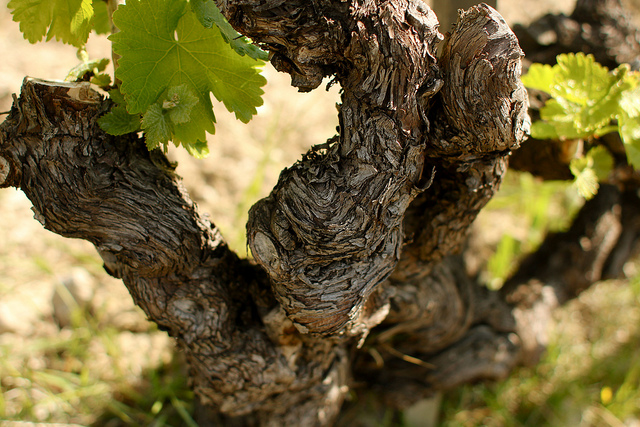
Older Grenache vines produce smaller amounts of concentrated fruit with more complex flavor, deeper color, and more intense aromatics. Photo credit
The taste
There’s one thing in common with most Garnacha – heaps of ripe, juicy berries. Up front it’s all kirsch, raspberry, and cherry jam, with red whips, strawberry ganache, and plum jumping into the mix. Out back you’ll find traces of herbs/garrique, anise, and black pepper hanging out. It’s altogether a super slammable, easy drinking red wine that almost anyone can appreciate, and the best examples still deliver enough complexity to please more finicky palates.
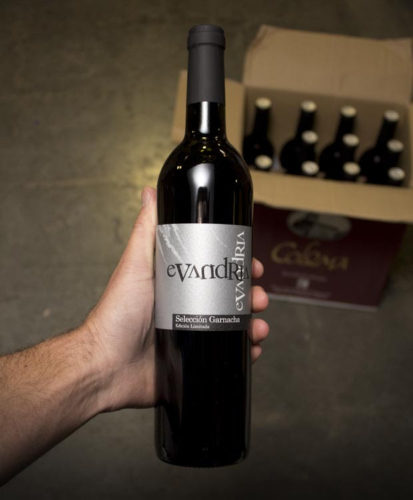
Copious aromas and flavors of strawberry ganache, juicy red cherry, and spice cake just flow out of this wine in a silky, warm, round texture.
If you want a truly memorable experience, look for “old vine” or “vinas viejas” on the label. The most lavish and complex Garnacha comes from older vines anywhere from 35-100+ years old. These gnarled creatures produce much less fruit than young vines, but the sparse clusters bring denser flavor, deeper color, and slightly higher tannin content, adding up to an altogether more complex and richly textured wine.
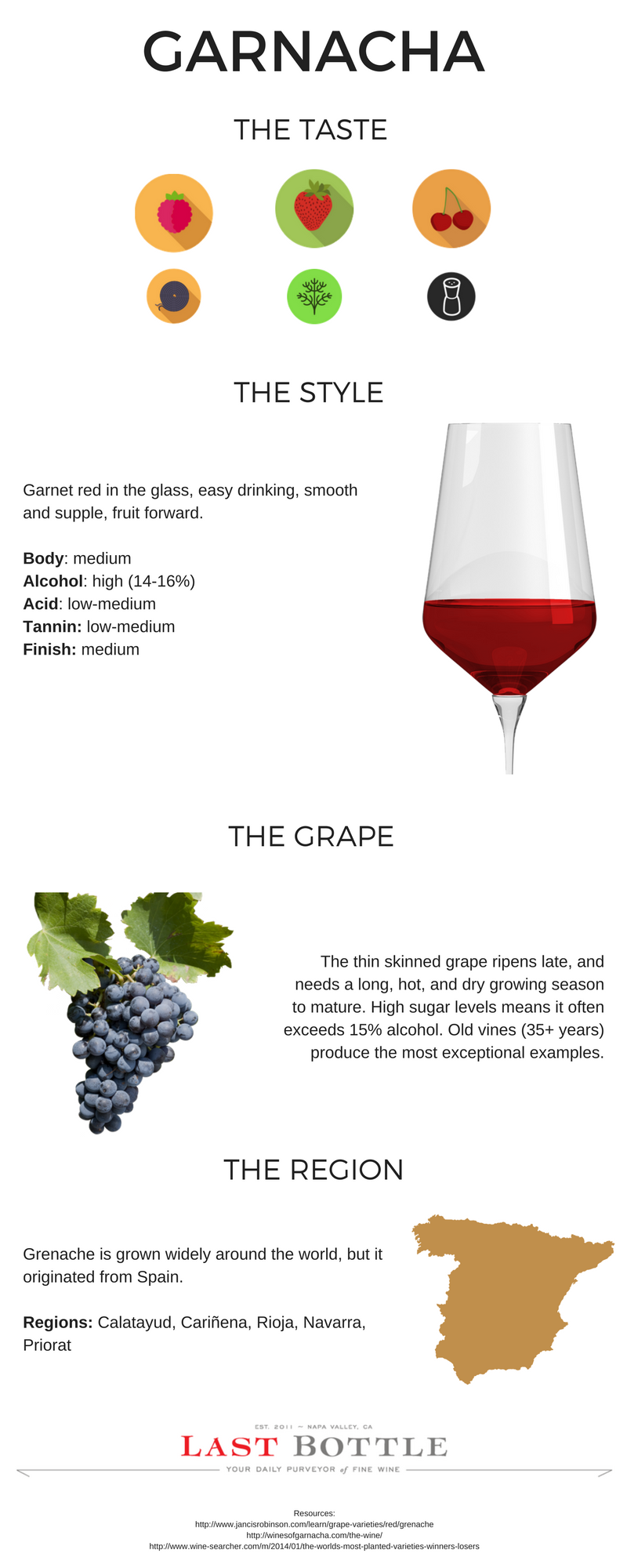
Where is Garnacha grown in Spain?
Aragon – This region is home to the most prolific Grenache plantings in Spain. The DO of Calatayud is home to the highest altitude vines, and is the only place in the world to legally define the “old vine” term as applying to vines 35 years or older. This region is also home to Cariñena, which has the single largest acreage of Garnacha, and Campo de Borja, also home to many old vines.
Rioja – In Rioja, Garnacha plays second fiddle to the more dominant Tempranillo. Although it’s often blended in small amounts with Tempranillo, you can still find some solid single varietal examples. They also produce quite a bit of “rosado”, the pale pink colored wine you might see labeled as “Tinto” Garnacha.
Navarra – Compared to other regions, the Garnacha here comes from younger vines and tends to be lighter in color and body, making it best enjoyed upon release.
Priorat – Some of the most spectacular Garnacha comes from Priorat. Most vines here average between 35-60 years old, and when combined with steep, elevated terrain, unique schist soils, and modern winemaking techniques you get the most extracted and richly concentrated wines.
What to eat with it
Garnacha is a remarkably food friendly wine. In general it does best with native Spanish dishes like Paella, long slow cooked roasted meats like lamb and pork, and sometimes cooked tomato sauces. Dishes that combine fruit and meat, like braised lamb with prunes also play nicely.
Ounce for ounce, dollar for dollar, it’s hard to find a more immediately enjoyable wine. Garnacha is straight up delicious stuff, and a screaming good bargain. Even die hard enthusiasts will have a tough time finding fault in a great bottle. Perhaps best of all, the stuff is dirt cheap, easily found for $10 – $15 all day long. Heck, the top rated Garnacha in this panel from Decanter tipped the scales at a whopping $18/bottle.
Tweet this
Is Spain's Garnacha the most overlooked wine out there? Click To Tweet Ounce for ounce, dollar for dollar, it's hard to find a more enjoyable wine than Garnacha Click To TweetRelated:

